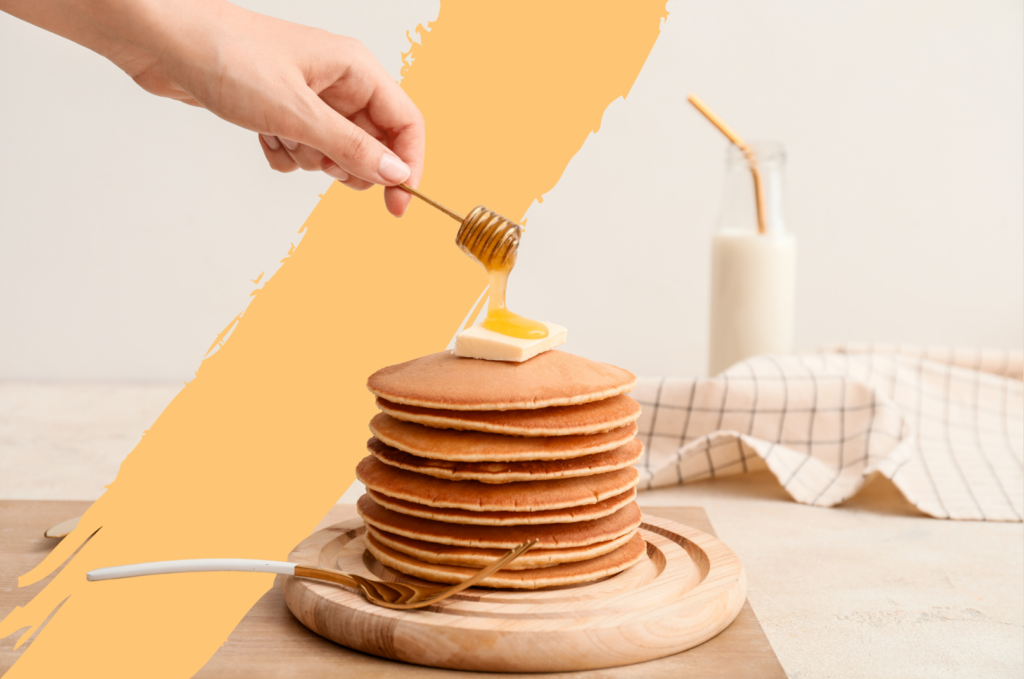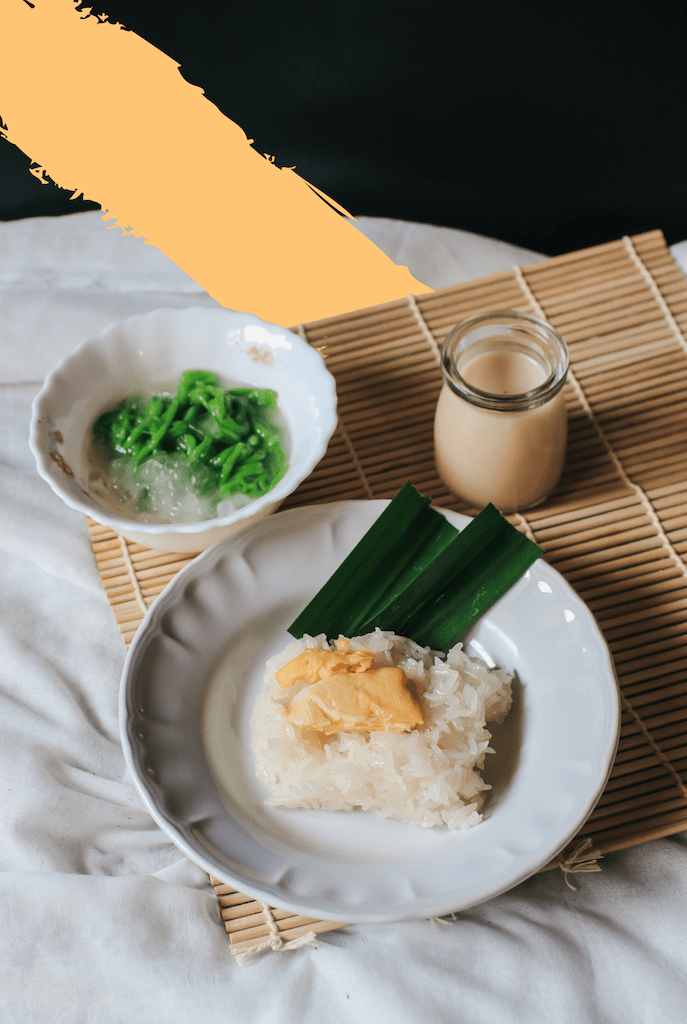Is that Krispy Kreme calling your name? Or perhaps it’s those brownie bites announcing themselves every time you’re need a pick-me-up? Goodness knows, after the year we’ve had, we all deserve a treat.
It seems like IDEAL aren’t the only ones reaching for a sugary incentive with increasing frequency – chocolate sales have soared by around £50 million during lockdown as people “self-treat at home”, according to the Guardian.
In fact, the nation’s developing sweet tooth shouldn’t come as too much of a surprise. There’s a reason why when times are bad we crave sugar; it releases good hormones like dopamine and serotonin and provides comfort and a little boost of pleasure in the process. Sadly, these chemical changes in the brain can lead to habitual behaviour forming, with these dopamine “hits” from eating sugar promoting rapid learning to preferentially find more of these foods.
In other words, eating sweets, sugary treats and chocolate quickly becomes addictive, as sugar has to capacity to ‘rewire’ the brain to keep you seeking it out.
While it’s safe to say sugar isn’t a healthy food, it’s not all bad. Sugar provides us with calories that we can convert into energy, and a little is present in some of the healthiest foods going. Carrots, sweetcorn, squash, berries and plums all have high sugar contents but are still considered a positive addition to your diet.
The problem is that most of us eat too much sugar, and sometimes compulsively, without knowing it. Sure, we all deserve a treat from time to time, but it’s equally important that we keep control of that sugar intake and consume it in as mindful a way as possible.
The answer? To bake those sweet treats yourself – something that’s also been on the rise during the pandemic – and try to use healthier, more wholesome alternatives to plain white, refined sugar. By making sweet treats instead of absentmindedly adding them to your supermarket trolley, you’ll know how much and what sugars you’re consuming.
With that in mind, here are 5 natural alternatives to sugar to make your home cooking that much sweeter.
RAW SMALL-BATCH HONEY
We haven’t gone full hipster here, we promise, by invoking the words ‘raw, small batch honey’. Nope, this isn’t purely fodder for fashionable foodies; it genuinely does taste better (in our humble opinion, of course) than the big branded stuff you get in the supermarkets.
Once you’ve got familiar with the nuanced, deep flavour of the stuff, you’ll start noticing it in your homemade sweet treats, and salad dressings. What’s more, raw honey contains more antioxidants, nutrients and vitamins than plain old white sugar, though it should be noted that the difference is negligible.
As Serious Eats points out ‘’commercial honey is blended, boiled and reduced to hit a median of what we assume honey should look and taste like, with a general sweetness being the most prominent thing on the tongue. But when it comes to raw, small-batch honey, sweet is just the beginning.”
Indeed, raw honey can burst with caramel flavours, full of floral notes like honeysuckle and jasmine, and even call to mind tropical fruits like pineapple and mangos. On another occasion, or even in tandem, it can be zesty with citrus and even woody with notes of cedar and oaks.

All these different notes of flavour depend on where it comes from; the honey’s terroir, if you will. Native Australian honey will taste very different from Southeast Asian honey, for instance, and honeybees collecting nectar from the heather fields of the UK will give a totally different flavour profile to their honey than that produced by bees buzzing around the lavender fields of France.
Even regional distinctions exist; bees tend to travel around three miles to forage for nectar, so honey from Sydney is going to taste completely different to honey from Melbourne, too.
It’s not only the geography that affects the honey’s taste. The changing seasons also affect honey’s taste, texture and colour. It’s kind of romantic when you think about it, and another reason why our bee population needs protecting at all costs.
Ideal cooking tip: Cooking with raw honey can be a little tricky. Heating honey to around 95 degrees is fine as that’s how hot beehives can reach. However, most honey experts don’t recommend using raw honey in baked goods that are exposed to high temperatures. This is because prolonged exposure can damage its nutritional benefits and affect it’s delicate taste. That said, if you simply want to add sweetness and a honey flavour to your cooking rather than keep it’s nutritional benefits and nuanced flavour intact, heat away.
PURE PALM SUGAR
Here at IDEAL, palm sugar is a staple in all our domestic kitchens. We use it in everything, for everything, from giving roundness of flavour to our curries to replacing sugar in our sweets. This unrefined sugar is made from the sap of the sugar palm tree, and a good quality palm sugar will sing of caramel and butterscotch. It also has a wonderful floral aroma and is smooth and fudgy in texture; all boxes ticked, then.
Palm Sugar is considered a healthier alternative to sugar as it involves minimal processing and has no added chemicals. Moreover, as it’s an unrefined sugar, it retains levels of plant-based vitamins and minerals. Another good thing about palm sugar? It has a low glycemic index compared to other sweeteners; in other words – it’s less likely to cause your blood sugar to spike and crash.
While you can use palm sugar as a replacement sweetener in your desserts at home, we think it’s the perfect excuse to explore South East Asian desserts which celebrate the stuff with enthusiasm. If you’re keen to follow your passion for sweets to the other side of the world, then first check out these 10 IDEAL foodie destinations in South East Asia.
Ideal shopping tip: Really good quality palm sugar is hard to find in the UK. Here at IDEAL, we’re quite partial to using pure palm sugar blocks made by Aroy-D, which you’ll find in dedicated Thai supermarkets and sometimes in Chinese supermarkets, too.

COCONUT SUGAR
Not to be confused with soft coconut palm sugar, coconut sugar looks just like brown sugar, but with a wonderful caramel note and a roundness of flavour which standard sugar just can’t compete with. Coconut sugar undergoes little processing so, as with other unrefined sugars, it retains some of its natural vitamins, minerals, fibre and antioxidants.
Coconut sugar is derived from the coconut fruit and is a starchy sugar alternative made from the mature sap of coconut’s inner ‘flesh’. It tastes sweeter than sugar derived from sugarcane, but contrary to the belief of some, doesn’t contain significantly fewer calories than standard table sugar.
Coconut sugar also contains minerals, like iron, zinc, potassium, and calcium, and is considered one of the better options for people who are on a low-carb diet or are trying to lose weight, but are still keen to get the sweet fix from somewhere.
MOLASSES
Molasses is a thick, syrupy substance derived from refining sugarcane, sugar beets or fruits to sugar. Molasses varies significantly depending on the type of sugar, the process of extraction, and the plant’s period of growth. Black molasses, commonly used for baking and cooking, is perhaps the most common sweetener here, though famous chef Yotam Ottolenghi has contributed hugely to pomegranate molasses gaining popularity in the UK in recent years.
There are many ways to use molasses beyond drizzling it over your obsessively styled salad. It can be added to smoothies, cereals, oatmeal, cookies, and many more items, and brings a real depth of flavour to everything it graces.
MAPLE SYRUP
Maple syrup’s sweetness is rich, with hints of vanilla, prune, and caramel, making it an elegant replacement for a sprinkle of coarse, boorish white sugar. In particularly, it’s an excellent sweetener for cocktails and pastries, and is perhaps most beloved as a pancake topping; count us in on that one!
Maple syrup is generally produced from the sap of red maple, black maple, or red vine maple, although it may come from other maple varieties as well. It contains some minerals and more than 20 different antioxidants. That said, although it has a lower glycemic index than sugar, consuming too much of it can significantly raise your blood sugar levels; go easy.
THE FINAL WORLD
Even writing this article has made us crave some sweet snacks before lunch time. But it’s important to highlight, as explained by BHF Dietician Victoria Taylor, that while “many people are now choosing alternatives to white sugar, including coconut sugar, honey, molasses, syrups and nectars (such as date or agave), in the belief that they are healthier… all of these products contain free sugars – the kind we eat too much of on average in the UK”.
Indeed, we should stress that coconut sugar has the same number of calories as other sugar, refined or not. She recommends that you “use it if you like the taste or if it works in your recipe, but treat it in the same way as any other sugar and use it sparingly.”





